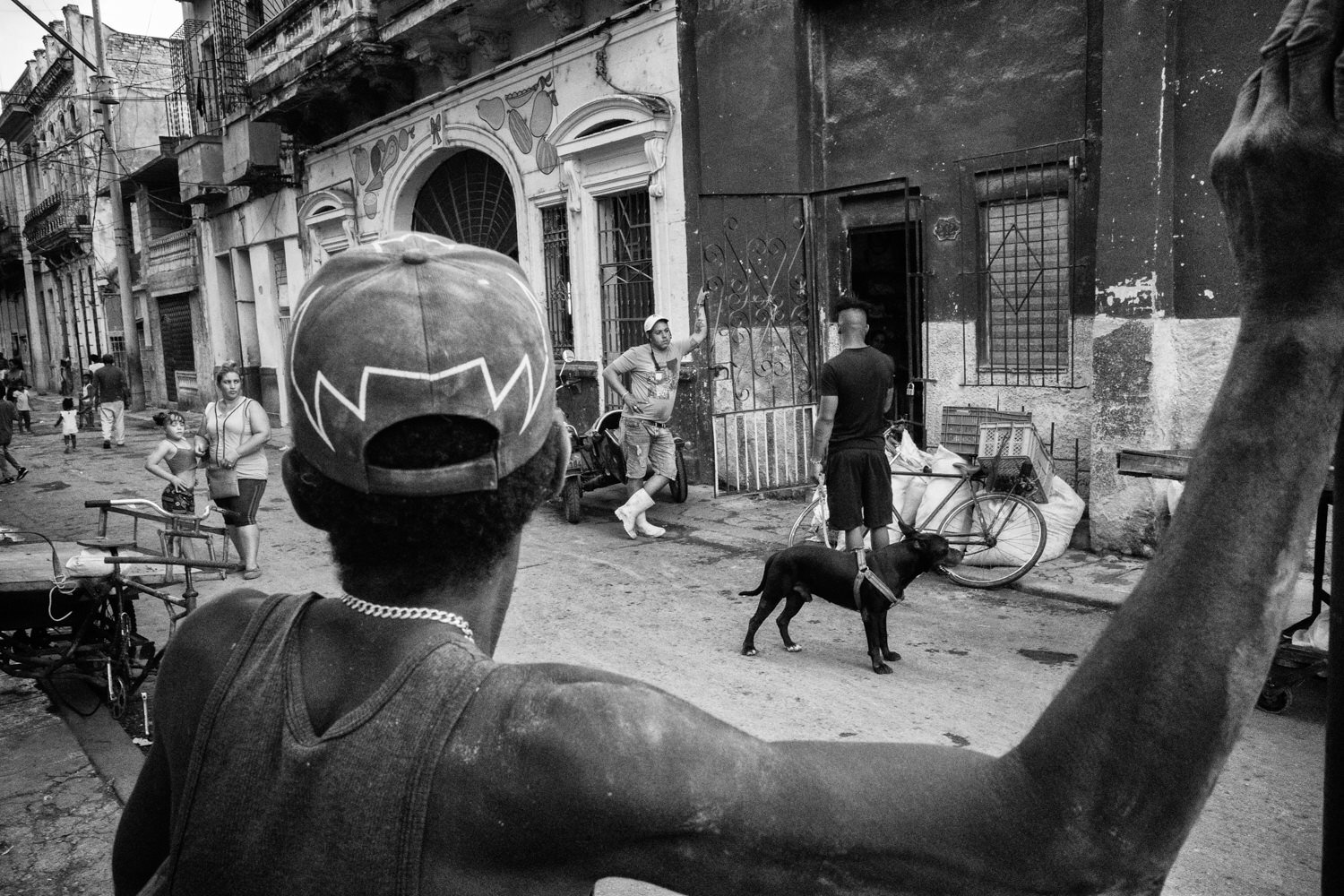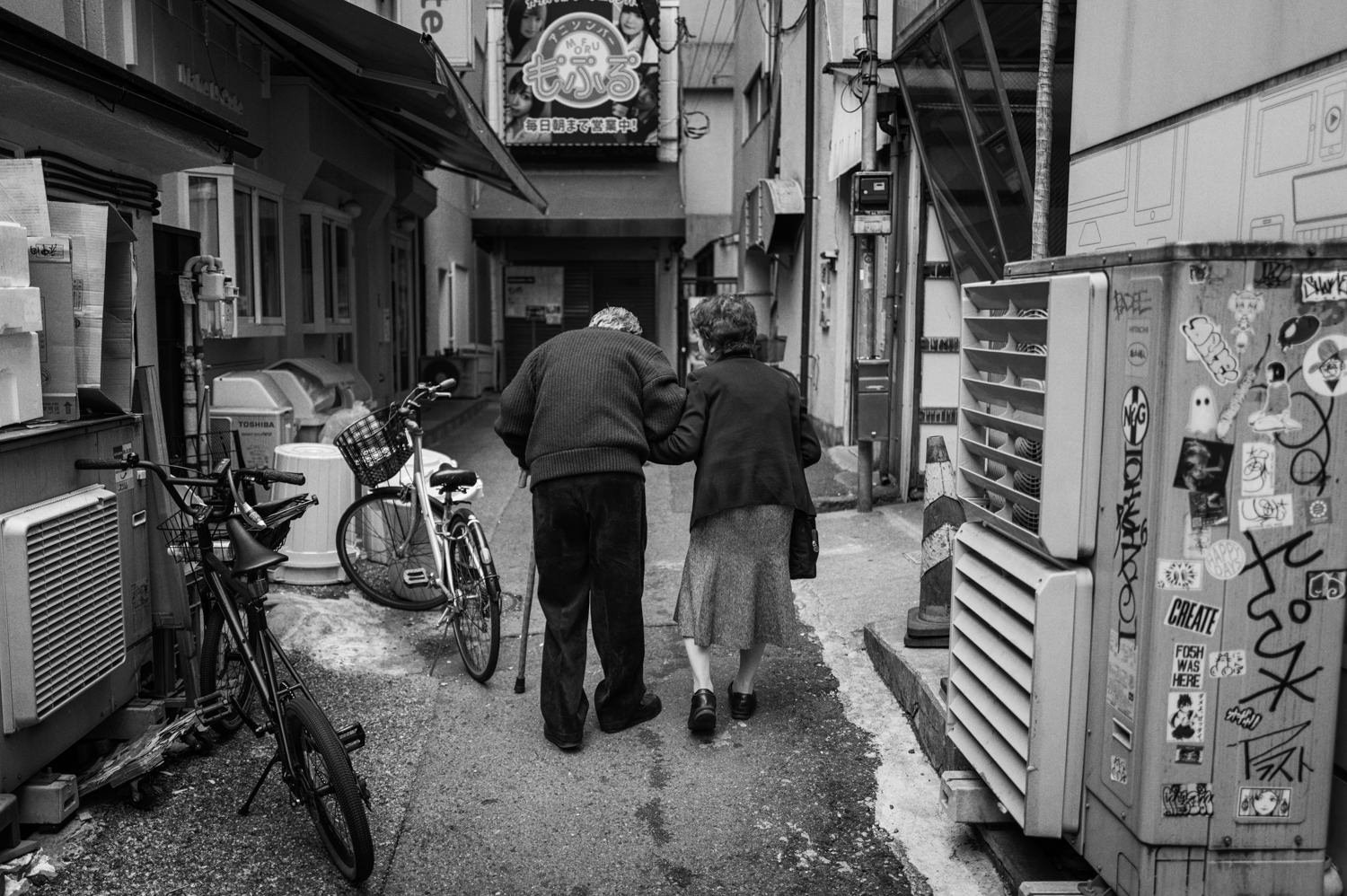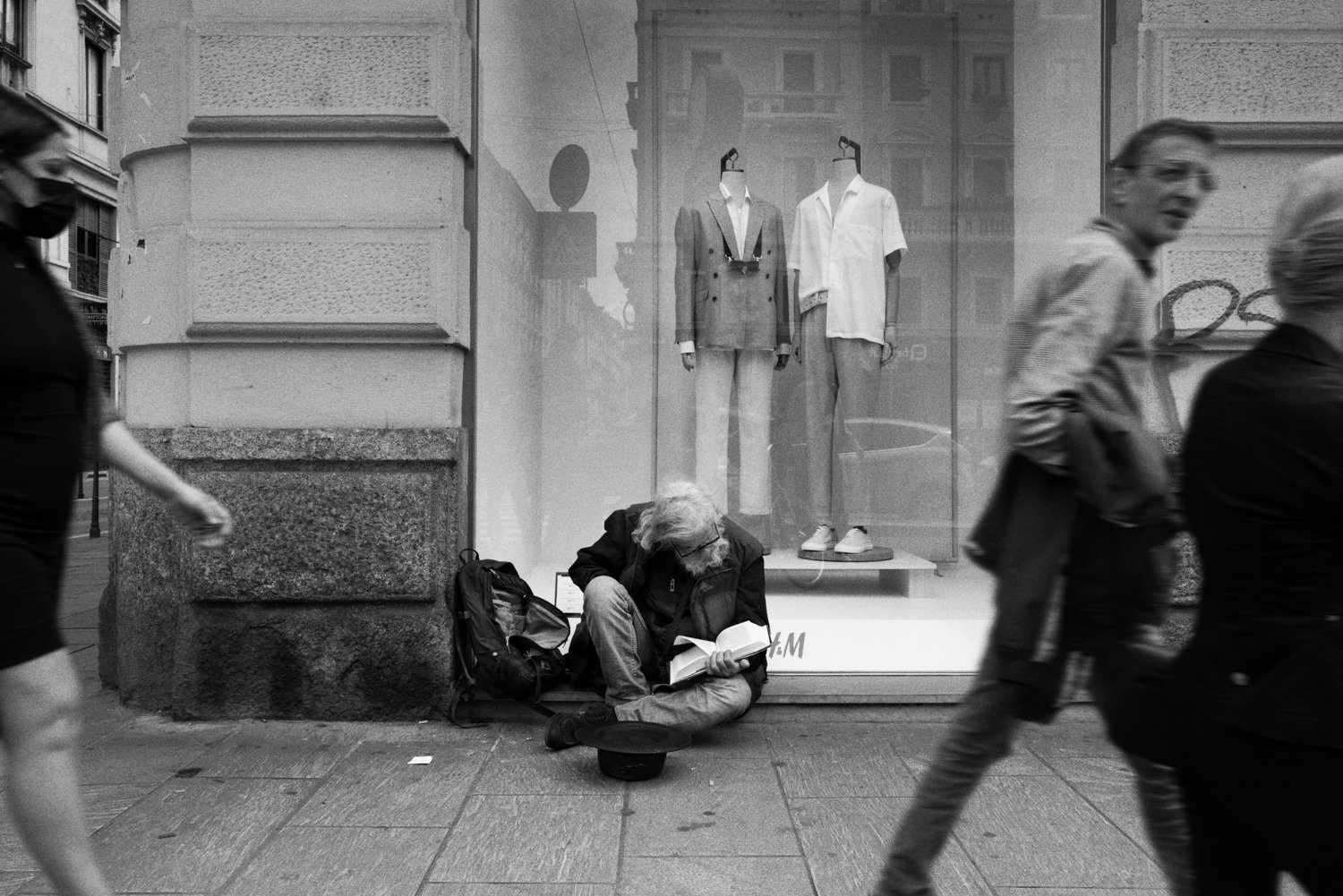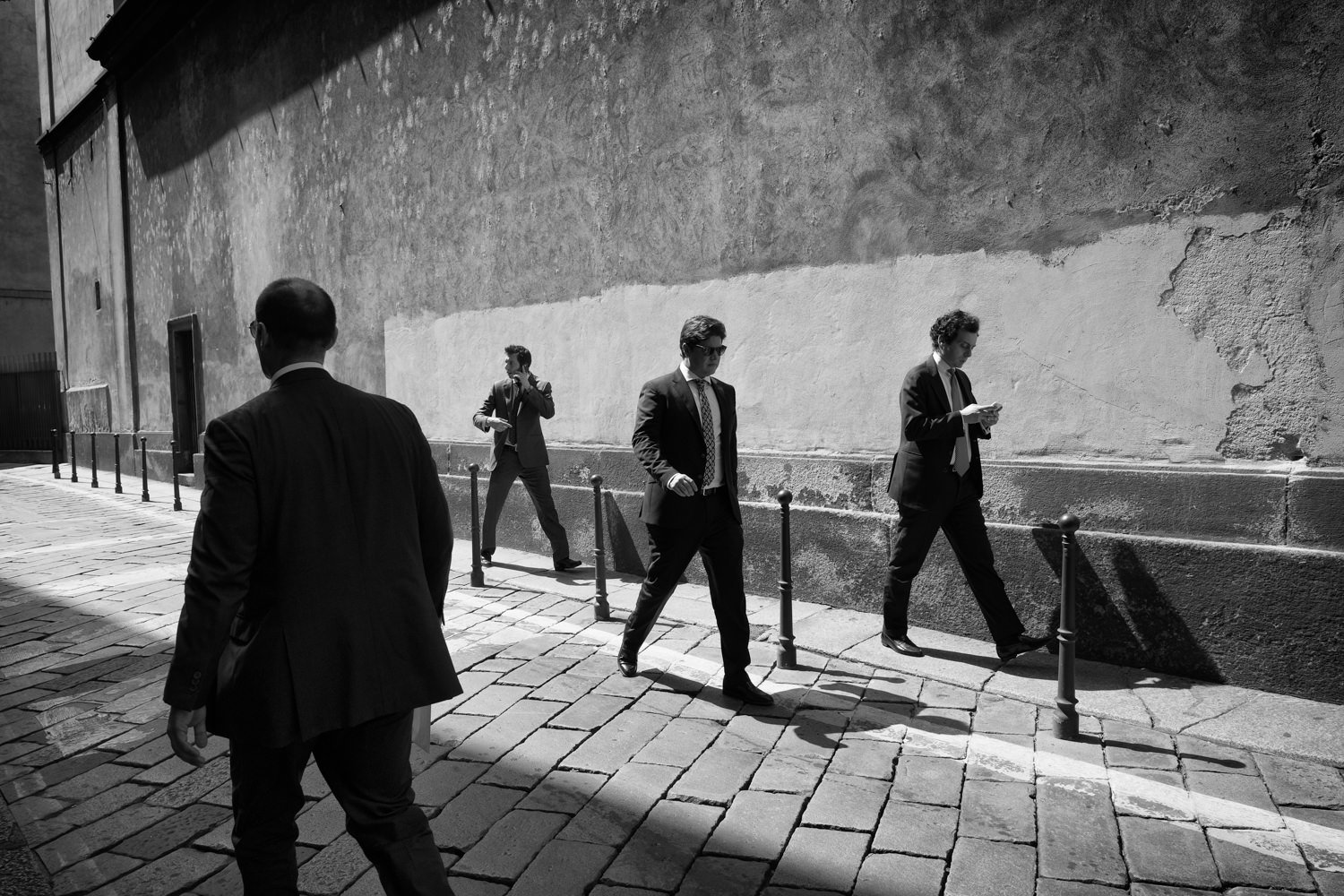As a professional photographer and long-time Leica enthusiast, I currently own several M bodies, including the classic M3 and M6, but my primary tool for street photography is the M11P. While I cherish the vintage cameras in my collection, it's the M11P that has become my essential companion for capturing life on the streets.
The Leica M System
The M system's timeless design continues to excel in street photography. The M11P, in particular, represents the perfect blend of classical mechanical excellence and modern digital capabilities. Its discrete presence, silent shutter, and minimal size allow me to work without drawing attention - a crucial advantage when photographing on the streets.
The rangefinder system provides a unique advantage, showing me more than what the lens captures and allowing me to anticipate moments before they enter my frame. Combined with the M11P's enhanced viewfinder brightness and precise frame lines, this creates an unparalleled tool for street photography.
My Three Essential Lenses
My street photography relies exclusively on three wide-angle lenses, each used with specific hyperfocal settings:
21mm Super-Elmar f/3.4 ASPH
I use this ultra-wide exclusively at f/8 hyperfocal. Working close to my subjects, I use it as a proximity lens - filling the frame with my subject while maintaining environmental context. At f/8, everything from 1.2 meters to infinity remains sharp, allowing me to focus entirely on composition and timing.
24mm Super-Elmar f/3.8 ASPH
Set consistently to f/10 hyperfocal, this lens provides the perfect balance between ultra-wide and standard perspectives. I use it to work close to subjects, eliminating distractions through proximity. The hyperfocal setting ensures everything from 1.4 meters to infinity stays in sharp focus.
28mm Summicron f/2 ASPH
My most frequently used focal length, always set to f/11 hyperfocal for street work. This provides critical focus from 1.8 meters to infinity - perfect for spontaneous moments. While it's capable of beautiful bokeh at f/2, the hyperfocal approach better suits my street photography style.
Understanding Hyperfocal Distance
The precision engineering of Leica M lenses makes hyperfocal focusing remarkably straightforward. Here's how it works and why it's so effective for street photography:
What is Hyperfocal Distance?
Hyperfocal distance is the focus point that provides maximum depth of field, from half the focused distance to infinity. When set correctly, everything within this range will be acceptably sharp.
Setting Hyperfocal on M Lenses
The mechanical precision of M lenses makes setting hyperfocal distance simple and repeatable:
21mm at f/8:
Locate the f/8 marking on the depth of field scale
Align the infinity mark with this f/8 marking
Everything from 1.2m to infinity will be in focus
Havana - 21mm Super-Elmar f/3.4 ASPH
24mm at f/10:
Find the f/10 marking on the depth of field scale
Align infinity with this mark
Sharp focus from 1.4m to infinity
Tokyo - 24mm Super-Elmar f/3.8 ASPH
28mm at f/11:
Align infinity with the f/11 marking
This ensures sharpness from 1.8m to infinity
The beauty of this system lies in its mechanical simplicity - no calculations or electronic aids needed. The tactile nature of the focusing rings means I can set these distances even without looking at the lens.
Budapest - 28mm Summicron f/2 ASPH
My Street Photography Technique
My approach combines these technical settings with a specific shooting style:
Proximity Shooting
Using wide-angle lenses to get close to subjects
Filling the frame to eliminate distractions
Using the environment as context while maintaining subject emphasis
Zone Focusing
Pre-set hyperfocal distances for each lens
No need to adjust focus while shooting
Complete concentration on composition and timing
Anticipation
Using the rangefinder's wider view to anticipate moments
Quick response to developing scenes
Confident framing without chimping
Why This System Works
The combination of the M11P's capabilities with these three lenses creates a highly efficient street photography system:
Technical Consistency
Each lens has its dedicated aperture and hyperfocal setting
Settings become muscle memory
No technical decisions needed while shooting
Creative Freedom
Technical aspects are preset and reliable
Full attention on composition and timing
Confident working in rapidly changing situations
Discretion
Minimal equipment
Quick, silent operation
Unobtrusive presence
Final Thoughts
While I treasure my M3 and M6 as pieces of photographic history, the M11P with these three wide-angle lenses has become my ultimate street photography tool. The combination of traditional mechanical excellence with modern digital capabilities, coupled with the systematic use of hyperfocal settings, creates an unmatched platform for capturing decisive moments on the street.
This approach might seem technical in description, but in practice, it becomes second nature. The mechanical precision of the M system makes these technical aspects fade into the background, leaving me free to focus on what really matters - observing and capturing life as it unfolds on the streets.














